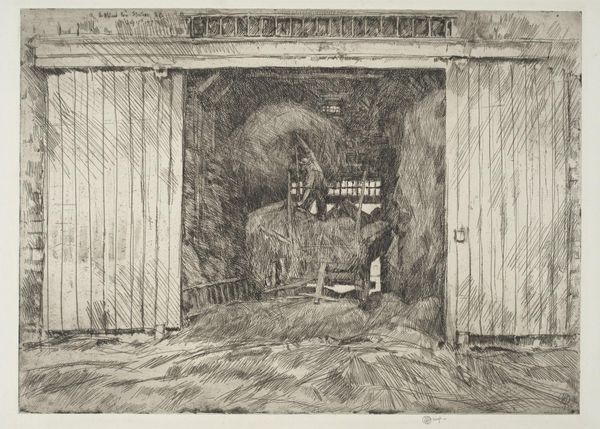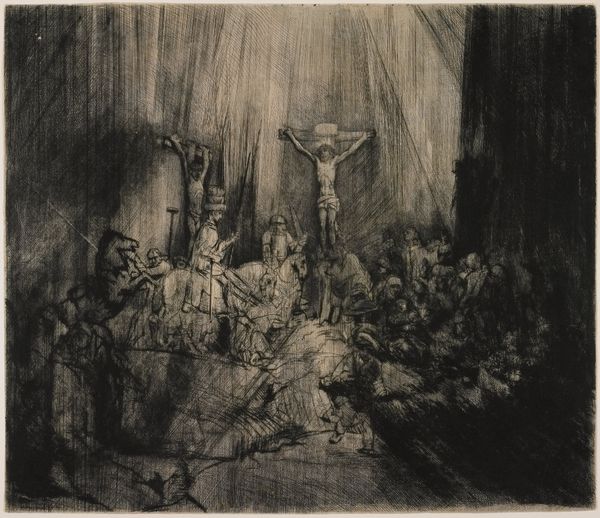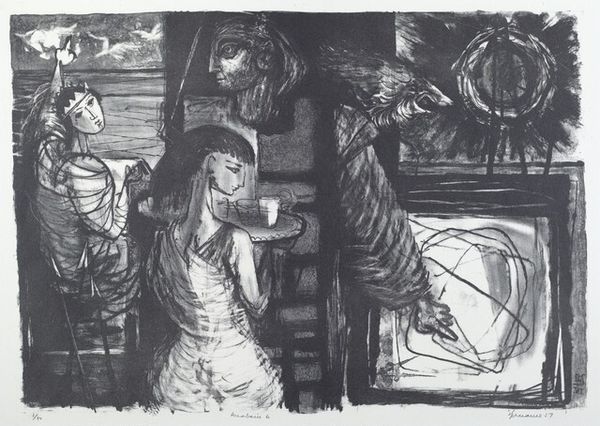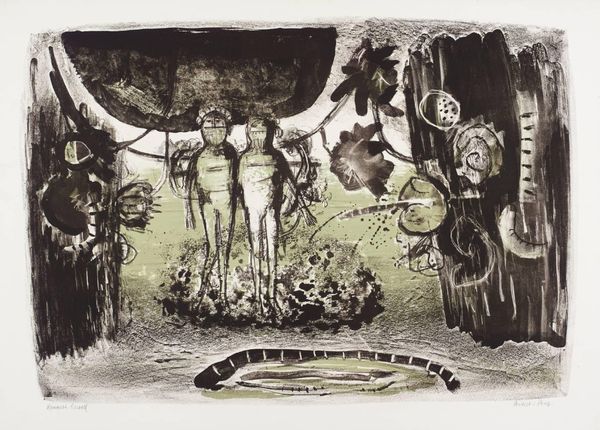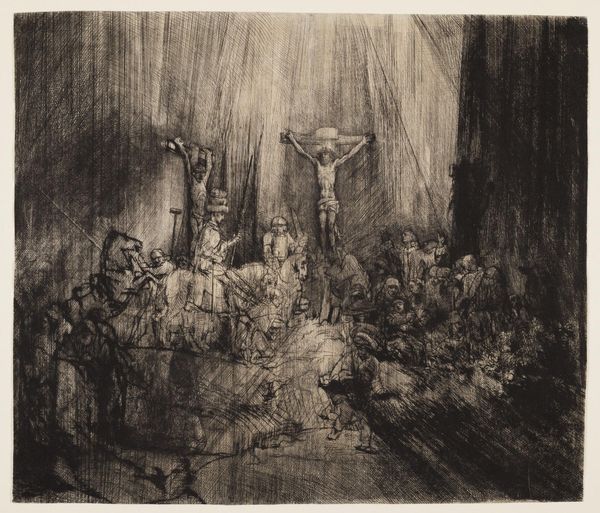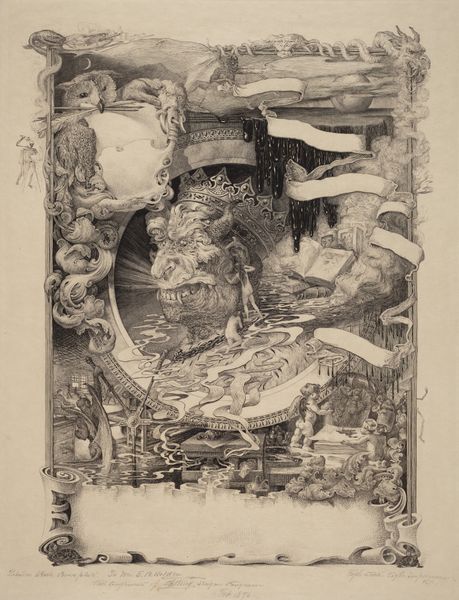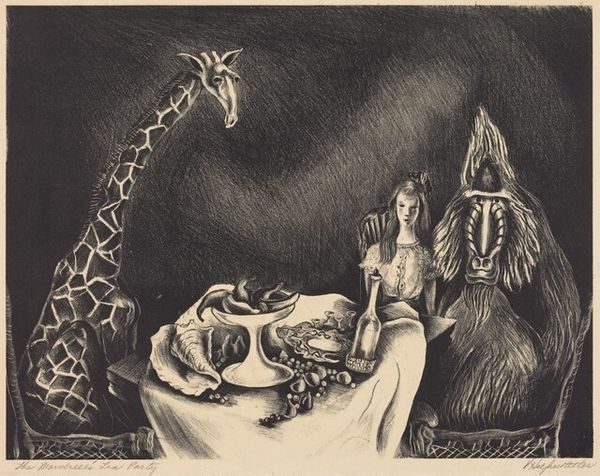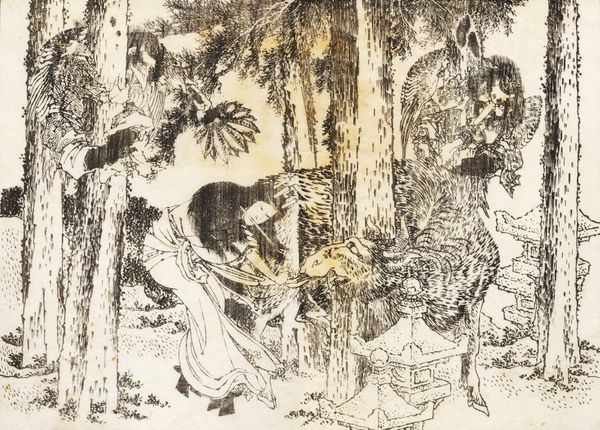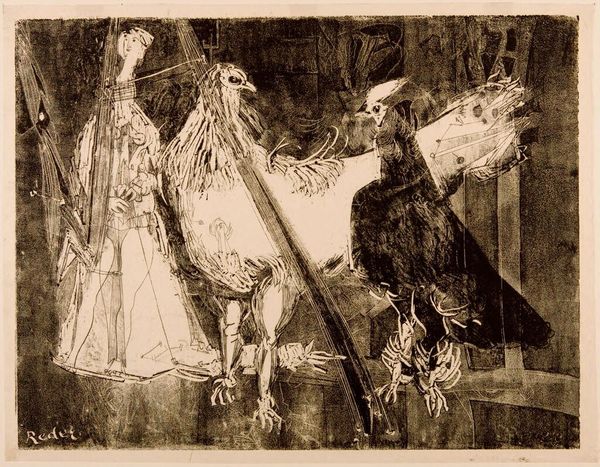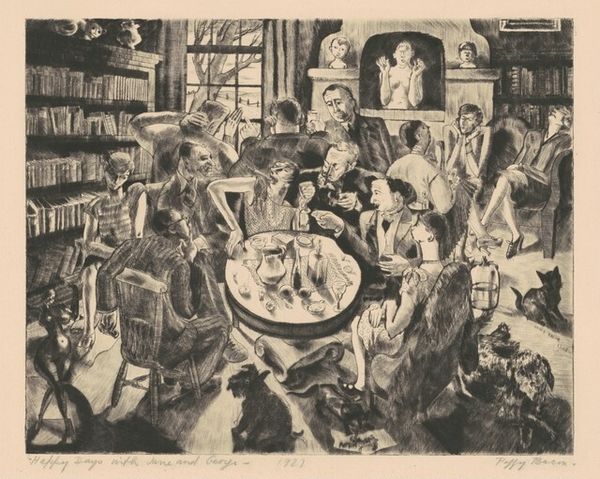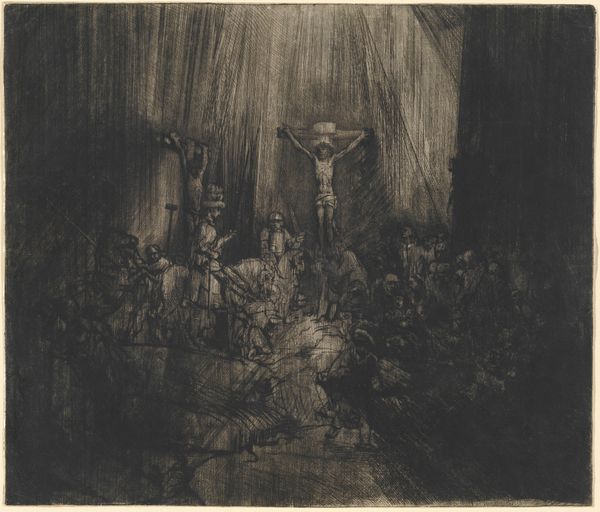
drawing, graphite, charcoal
#
drawing
#
narrative-art
#
charcoal drawing
#
pencil drawing
#
ashcan-school
#
graphite
#
genre-painting
#
charcoal
#
charcoal
#
graphite
Copyright: Public Domain: Artvee
Curator: "The Tournament," rendered in 1921 by George Bellows, seems to capture a society event with quite a dramatic atmosphere, wouldn't you agree? Editor: Absolutely. The swirling charcoal creates a sense of intense activity, but there’s also a strange foreboding lurking in the shadows. What’s happening here? Curator: Bellows has depicted what seems to be a tennis match, yet there's something theatrical about it. It could even be staged. The grandstands teeming with spectators, rendered with sweeping, expressive strokes of charcoal and graphite, point to a carefully constructed, perhaps artificial spectacle of sport. Editor: Right, the architectural details are suggestive. The presence of viewers positioned like classical gods, enthroned above the match, evokes memories of the Roman Colosseum. Bellows isn’t merely showing a tennis game; it’s charged with symbols of status, spectatorship, even judgment. The umbrella acts almost like a halo over one of the figures. Curator: And what about the artist’s choices of charcoal and graphite? Those materials allowed him a direct, physical engagement with the surface, and the ability to swiftly capture motion and mood. It suggests that Bellows, often associated with the Ashcan School, was interested in conveying the raw, lived experience. He wasn't just representing an event, but immersing the viewer in its sensory overload. You can almost smell the chalk of the tennis court! Editor: I think that is a tennis net and racquet lying on the floor on the bottom-left corner, a subtle sign of privilege or luxury. I would venture to guess that they were carelessly discarded like trophies after a glorious match! What about the two prominent characters to the left that seem to be engaging in some sort of greeting, or even agreement? There appears to be the giving of gifts too. What is the hidden significance of their position, adjacent to a bare, seemingly naked person, perhaps offering another type of gift? This could have underlying meaning. Curator: Interesting points! The placement certainly begs speculation, especially given the time period. But from a material perspective, Bellows' choice to render such a scene in black and white brings into sharp focus the play of light and shadow, highlighting the stark contrasts within this social microcosm, reflecting back to the observer the complexities of its manufacture and perception. Editor: The power of symbols, isn’t it? Now, looking at "The Tournament" knowing more about both its construction and symbolism… Curator: I am left appreciating how a drawing of a simple tennis match manages to ask so many questions.
Comments
No comments
Be the first to comment and join the conversation on the ultimate creative platform.
